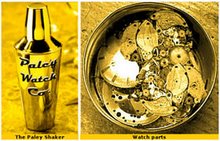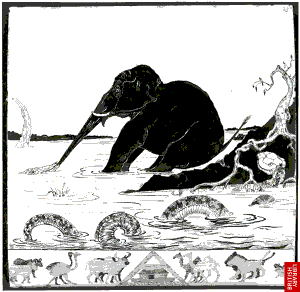 Females from a newly discovered "solitary" species build the perfect environment for their eggs according to scientist Jerome Rozen.
Females from a newly discovered "solitary" species build the perfect environment for their eggs according to scientist Jerome Rozen.This bee makes a "petal sandwich" out of two layers of flower petals inside a small burrow it digs in the ground, cementing them together with clay or mud. When the physical structure is ready it gather provisions of a sticky mix of nectar and pollen and places it on the chamber's floor. An egg is deposited on its surface, and the chamber is closed by carefully folding the petals at the top. The nest is capped with a plug of mud, sealing the young bee in a humid chamber that becomes rigid and protects the larvae as it eats its rations, spins a cocoon, and falls into a 10-month sleep until spring.
"They've found a way of protecting this immature stage by creating an environment with fairly high humidity," Rozen said. "The humidity is high because the chamber is constructed with two layers of petals with mud in between, which means the food will not dry out when the larvae feeds. Meanwhile the outside becomes very hard like a nut. This makes it very comfortable and very safe because nothing's going to come down and crush them. Anything that wants to eat them from above is going to have a hard time. We are most intrigued by its beauty and as an evolutionary mechanism for protecting offspring".
Storyteller: Jerome Rozen, Curator , American Museum of Natural History.
Source: Rare Bees Make Flower-Mud "Sandwiches"
Source: Rare Bees Make Flower-Mud "Sandwiches"







.jpg)























4 comments:
Dolly,
This reads more like a description than a story. Maybe I'm missing something here but it doesn't have the same theme of speculation of other posts.
What are your thoughts on posting this one?
Just wondering,
Dave Duffy
Kingsburg, CA
Hi Dave
I agree that this one is a little different to the others. What struck me was Jerome's comment that the bees had "found a way....". There is so much that is assumed in that little phrase. The sophistication of the innovation described is quite staggering and left me marveling at how this could have developed by chance and necessity alone. The bees found a way...
Love Dolly
Hi Dave
I have added an additional statement which Jerome made that was published in the printed edition of the national geographic: "We are most intrigued by its beauty and as an evolutionary mechanism for protecting offspring" We are assured that that "Evolution dunnit". I would love to understand how.
Kind regards
Dolly
Thanks Dolly,
I am thankful that someone writing a science article can recognize beauty. The acknowledgment of beauty in the world is at least one reason my wonder of the world remained while studying science.
Thanks for pointing out the loaded phrases. It gives me something to ponder.
God Bless,
Dave
Post a Comment